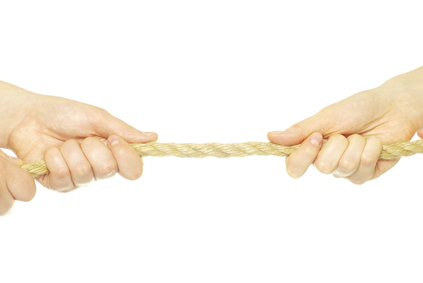
by Keir Brady | Sep 18, 2019 | Couples
What Is EFT
Emotionally Focused Therapy (EFT) is a structured couples therapy approach developed by Sue Johnson and colleagues, based on John Bowlby’s attachment theory. This approach is founded on the premise that attachment needs and bonds continue into adult relationships. Distress occurs for couples when attachment fears, especially the fear of abandonment, are triggered. Emotional responses to these fears can cause distress in the couple relationship. If a couple has a hard time meeting the emotional needs of one another, they can become stuck in negative patterns of interaction. These negative patterns occur due to ineffective attempts to understand each other’s emotional responses and related attachment needs.
EFT helps couples understand each other’s attachment needs and insecurities so couples can learn to respond to each other in more empathic, emotionally connected ways. When couples learn to respond in this way, they develop a more secure attachment. EFT can help couples understand their own emotional responses as well as the emotional responses of their partner. The goal of EFT is to help couples reinforce positive relational bonds already in place and to increase secure attachment and connection in the couple relationship.
EFT Stages
There are three stages and nine steps involved in EFT. The first stage is the assessment and de-escalation phase. During this stage, the therapist assesses the couples patterns of interaction and helps to de-escalate conflict. In the second stage of EFT, the therapist works with the couple to find ways to form a stronger bond and a more secure attachment. The final stage of EFT is about consolidation and integration. During this stage, the therapist helps the couple identify the changes that have occurred and integrate them into all aspects of the couples lives.
The Stages And Steps
Stage 1: Assess And De-escalate
Step 1: Identify key issues of concern for the couple.
Step 2: Identify negative relationship patterns of interaction and
how they increase conflict when important issues arise.
Step 3: The therapist helps the couple to identify unacknowledged
fears and negative emotions related to attachment needs and negative
relationship patterns.
Step 4: The therapist reframes key issues in terms of negative
relationship patterns and underlying emotions related to
attachment needs.
Stage 2: Changing Patterns of Interaction
Step 5: The couple are each able to share their deeper
emotions and needs based on attachment.
Step 6: The couple is coached in how to show acceptance and
compassion for their partner’s deep emotions and attachment
needs.
Step 7: The couple leans how to express deep emotions and
attachment needs while discussing issues that are likely to lead to
conflict.
Stage 3: Consolidation And Integration
Step 8: The therapist coaches the couple in using new
communication styles to discuss old problems and create
new solutions.
Step 9: The couple learns new ways to use skills learned in
therapy in other situations outside of therapy and develops a
plan to make new interaction patterns a consistent part of life
after therapy.
Is EFT Effective
Emotionally focused couples therapy is an evidence based therapeutic approach. There is strong empirical evidence supporting the efficacy of EFT. Couples who participate in EFT often feel emotionally closer to their partner. Once the couple addresses attachment injuries and blamer softening occurs, couples report feeling a deeper level of connection to one another, which often results in an increase in relationship satisfaction. Furthermore, what the couple learns in EFT can be translated to other areas of their lives, encouraging a more secure attachment to each other.
EFT In Practice
A couple comes in for therapy because of constant fighting and a lack of intimacy. In the first stage of therapy, the therapist helps the couple recognize the interaction patterns that develop based on attachment needs. For this couple, the husband reaches out to his wife and the wife doesn’t respond the way he wants her to, so he becomes angry and critical. His wife responds to his anger by withdrawing. The couple’s interaction pattern is one of pursuing and withdrawing. The therapist helps them understand the underlying emotions of the husband feeling rejected and the wife feeling afraid.
In the second and third stages of therapy, the couple learns how to change their patterns of interaction. The therapist helps the couple acknowledge and validate their partner’s emotional experience. The couple is encouraged and coached to brainstorm new solutions that work for both partners. When the couple recognizes the emotions underlying the behavior of their partner, they are able to alter their own reactions and establish healthier interaction patterns. The therapist then helps the couple to develop a plan to utilize this approach in other areas of their lives where conflict can arise.
If you are struggling in your relationship, couples counseling can help. A therapist that is trained in EFT can help you understand your attachment needs and improve your emotional connection so that you can feel closer to each other. When you feel understood and deeply connected to your partner, your couple connection can grow stronger.

by Keir Brady | Sep 4, 2019 | Couples
Chances are, if you are in a long-term relationship you have probably had a fight or two. Disagreements in relationships are expected and can even be healthy and encourage growth. However, arguments can also lead to hurt feelings and trouble in your relationship if you aren’t fighting fair. Although conflict in a relationship happens, learning how to fight fair can help strengthen your relationship and keep it healthy.
1. Discuss Issues As They Arise
When you have an issue with your partner, let them know about it when it occurs. This way you are less likely to build up resentment. If your partner isn’t aware that something is bothering you, they are unlikely to change the behavior. When you let resentment build, it is easy to explode over something that is seemingly small. For instance, if your partner leaves their dirty dishes in the sink and you believe they should be put in the dishwasher, you will probably be irritated every time you see them in the sink. If you let your partner know that this bothers you, then you can come up with a compromise that you both can agree on.
2. Know What To Let Go
Since you and your partner are not the same person, there is a good chance that you will disagree at times. While there are some issues that you don’t see eye to eye on that will be important to discuss, even if you know it will turn into a fight, there will be other issues that you can let go. The key is figuring out the difference. A good way to determine this is to consider how long the issue is going to be around and how important it is to each of you. If the issue will no longer matter by the end of the day, it is probably not worth the fight. It is helpful to know yourself and your values so you can decide what you can let go. If you make an issue out of everything in your relationship, you will end up with a problem focused relationship.
3. Stick To The Topic At Hand
Focus on the current topic when you have an argument with your partner. When you bring up past problems and issues, it is difficult to resolve anything. If a past issue keeps being brought up, you might want to set aside time at a later date to focus on that issue. Keep in mind that there are some issues that are unresolvable and you will need to find some way to say what you need to say and then agree to disagree. Staying on the current topic lets your partner know that it’s important to you. If one of you changes the topic, the other can give a gentle reminder to keep the focus on the current situation. Having firm boundaries around keeping the past out of the present argument can keep your fight more fair.
4. Set Some Ground Rules
If you have rules in place that you both follow, it can keep things from getting out of hand. Name calling, yelling, belittling, sarcasm, stonewalling and withdrawing can cause the disagreement to become more of a battle. When your feelings are hurt, it’s hard to focus on coming up with a solution, as the focus is on self-protection. Having rules in place that keep things respectful can be very helpful. For instance, you could agree not to call each other names during a fight. If one of you slips and calls the other a name, the other person can give a warning first and walk away if it continues so you both can take a time out. The one that walks away should let their partner know when they will come back to continue the discussion. This way both partners know it’s the way you are treating each other that’s the problem, not what you are discussing. Having rules in place keeps the fight fair for both of you.
5. Use A Code Word
In order to keep the fight fair, you can come up with a code word to use. When the code word is used, that means that you need a break from the argument. You can use the code word when you are feeling attacked or overwhelmed. Both of you need to agree that when the code word is used, you will take a time out and resume the discussion after an agreed upon time. If you agree that when the code word is used, you will take a break for 10 minutes, after the 10 minutes are up and you’ve had a chance to calm down, you should resume the discussion. Come up with a word that you both are familiar with, but don’t use in your everyday conversations. If it’s silly or funny, it can also help de-escalate the situation. Although using a code word can help you fight fair, make sure you don’t overuse it.
6. Use Effective Communication Skills
Using effective communication skills can help keep your fight fair. Effective communication skills require you to speak from your own perspective and listen to what your partner is saying. “I” statements can be used instead of “you” statements to keep what you say about how you are feeling about the situation instead of what you think your partner is doing wrong. Another way to communicate more effectively is to repeat back what you hear your partner say, and allow them to clarify. It is very difficult to repeat back what you hear your partner say if you aren’t listening to them. Doing this can help you both feel heard and understood, even during a fight.
7. Repair
After a fight, it is important to repair the damage. If you win the fight, your partner loses and vice versa. You want to make sure that your relationship is still in a good place. If you were wrong, or you said something mean or hurtful, apologize. Body language, facial expression, humor and touch are ways to connect with your partner after a disagreement. The important thing is to let your partner know that you are still on the same team. Make the argument about the argument and not about the stability of the relationship.
Conflict in your relationship may be unavoidable, but learning how to fight fair can keep your relationship strong. If you have difficulty keeping your fights fair, couples counseling can help. Fair fighting is a skill that you can use to manage your disagreements and help your relationship grow and thrive.

by Keir Brady | Aug 14, 2019 | Couples
Your attachment style can say a lot about your relationships. Maybe you feel confident in most aspects of your life, yet struggle to feel assured in your relationships. Your attachment style can impact how you behave and what you need in a relationship for it to be successful. Understanding your attachment style can help you figure out your strengths and weaknesses around relating so you can feel more secure in your relationships.
Attachment
Attachment refers to the way you relate to people and form bonds. John Bowlby suggests, in attachment theory, that the way a child attaches to their caregiver influences the way they form other social relationships. The four attachment styles are anxious-preoccupied, dismissive-avoidant, fearful-avoidant, and secure. Your attachment style determines how you go about getting your relational needs met. Although your attachment style begins to develop in infancy, it can change due to experiences and interactions with others. For example, if you had an abusive parent, and developed a fearful-avoidant attachment style, but your subsequent relationships were with those that had a secure attachment style, you could have a secure attachment to your spouse. Knowing your attachment style enables you to share this with others so your attachment needs can be addressed. No matter what your attachment style is, when your attachment needs are met you experience happier and healthier relationships.
Anxious-Preoccupied
If you have an anxious-preoccupied attachment style, you might be a highly sensitive person. You are probably very alert to small relationship shifts and find it easy to tune into other’s expressions and moods. Although you are very perceptive, you might have a tendency to catastrophize and imagine the worst. Like, if your partner doesn’t respond immediately to your text, you might assume they are mad at you and they want to end the relationship, instead of just assuming they are busy. When this insecurity sets in, you need a lot of reassurance from your partner to believe that everything is okay. If you receive this reassurance, everything calms down and you relax. If you don’t receive this reassurance, you may resort to manipulative behaviors that could end up destroying your relationship.
The anxious-preoccupied attachment style can develop when your primary caregiver is inconsistent in their availability and ability to respond to your needs. You might become anxious and worried and develop a deep fear of abandonment. This can cause clingy behavior in your adult relationships as you look to your partner to alleviate your self-doubt. Having a negative self-view while having a positive view of others, especially parents and partners, is quite common. Expressing anger can be difficult and suppressed anger might lead to an outburst followed by begging for forgiveness. It is difficult to trust others and there is quite often a strong fear of abandonment.
Dismissive-Avoidant
Someone with a dismissive-avoidant attachment style has a deep fear of rejection. To manage this fear, you might avoid intimate relationships by keeping your partner at a distance or leaving a relationship when it becomes too emotionally charged. A high level of independence is what you desire in your relationships. You might keep yourself busy with work, or hobbies that enable you to nurture your independence. Conflict and troubling emotional situations are hard for you to deal with and you might avoid them by distancing yourself from the relationship. It could be very difficult for you to feel emotionally close to anyone. You might believe you don’t need relationships and you could have a difficult time showing your emotions. This fear of emotional closeness can leave you feeling lonely and isolated.
Those with a dismissive-avoidant attachment style often experienced their caregiver as unavailable. You saw your caregiver as being unresponsive to your needs, or emotionally unavailable. This lead to a belief that you can only rely on yourself, not others. You may feel that if you were to open up to others emotionally, they would reject you. Independence was most likely highly valued in your childhood, while emotional displays were not tolerated. Although it may seem that you have an inflated sense of self, this defense mechanism often hides your deep fears and vulnerability. You might think of your childhood as happy, although it is often difficult to recall any memories related to your parents.
Fearful-Avoidant
If you have a fearful-avoidant attachment style, you probably have difficulty with both intimacy and distance. You could be deeply afraid of abandonment and equally scared of emotional closeness. This can result in a push-pull dynamic in your relationships. You could cling to your partner when you feel they are too distant, and push them away when you believe they are getting too close. Your relationships go through many ups and downs and seem to be quite dramatic. It could be very challenging for you to rely on others as you believe that they will let you down.
If you have a fearful-avoidant attachment style, you may have experienced abuse or neglect from your caregiver. This abusive pattern can sometimes continue in your adult relationships where you might take on a passive role. The fearful-avoidant attachment style can increase your risk for anxiety and depression. You may have viewed your caregiver as being anxious or scary. It is difficult to trust others as you have a negative view of both yourself and others. Although you fear getting close to others and believe they will reject you, there is a reliance on others to maintain a positive self-view.
Secure
When you have a secure attachment style, you tend to have a good view of love and intimacy. There is a belief that you are worthy of love and you expect others to be able to meet your needs. You are able to be vulnerable with your partner and can respond to their needs by offering comfort and support. It is easier to set healthy boundaries in your relationships which helps you get your needs met and enables you to effectively respond to the needs of your partner. Your relationships tend to be growth oriented and low in drama. You turn to your partner in times of distress and are able to be there for others when they need you.
With a secure attachment style, you felt that your caregivers responded to your needs appropriately. This helped you develop trust in others and their ability to meet your needs. You saw your caregiver as someone you could depend on and you expect this in your adult relationships as well. A positive view of self and others is experienced and you expect your relationships to be secure. You place a high value on both dependence and independence in your close relationships. It is easier to trust others and to expect the best from your relationships.
If you notice that you do not have a secure attachment style, it doesn’t mean that your relationships are doomed. Developing relationships with those that have a more secure attachment style can help you learn skills that could enhance your relationships. Cognitive Behavioral Therapy can help you understand and address the negative thought patterns and behaviors related to your attachment style that lead to difficulties in your relationships. By acknowledging and addressing insecure attachment patterns, you can experience more security and happiness in your relationships.

by Keir Brady | Jul 31, 2019 | Couples
Intimacy is the key to a happy and healthy long term relationship. Relationship intimacy requires a strong physical and emotional connection. When a relationship lacks intimacy, it can be difficult to maintain. If a level of connection is lacking, it can lead to feelings of loneliness and resentment. When you feel emotionally intimate with your partner, it increases your overall well-being. If you notice the intimate connection with your partner isn’t what you want it to be, read on for 10 ways to increase the level of intimacy in your relationship.
1. Try Something New
A daily routine can help you feel safe and comfortable. You know what to expect and what is going to happen next. In a relationship, this can provide a level of security. However, trying something new and unexpected can help reignite the spark that can keep your relationship interesting. Stepping out of your comfort zone and trying something new can be invigorating. It doesn’t really matter what it is that you do. You can learn something together, try an activity that is new to both of you, or try something in the bedroom you haven’t tried before. When you do something new and different together the excitement generated by the experience can create stimulation and connection that can help you feel closer to each other.
2. Reminisce
Reminisce about the good times you’ve shared together. When you discuss a fun experience you had together, or something funny you witnessed, it helps transport you back to that time as you recall the emotions surrounding the event. When you reminisce about pleasurable experiences you had, you recapture some of the positive feelings related to those experiences. If you are trying to increase your couple intimacy, you want to focus on the good memories and what it was like then. Reminiscing about the positive experiences helps keep the focus on what is going right in your relationship which can deepen your couple intimacy.
3. Touch More
Physical contact helps you stay connected to your partner. Touch is the first of the senses to develop and is an essential component of healthy development. Affectionate physical touch has a number of health benefits as well. The health benefits include a decrease in blood pressure and an increase in the bonding hormone, oxytocin. This occurs for the person being touched as well as the one doing the touching. So reach out and touch your partner. Hold hands when taking a walk, caress their leg while sitting together, and linger when you give them a hug. Spend more time touching each other to increase your level of intimacy.
4. Schedule Sex
Make sex a priority again. As unromantic as it might seem, life can get in the way of your sexual connection if it’s not on the schedule. When you crawl into bed after a long day, sometimes the only thing on your mind is sleep. It is easier to go without sex when you aren’t in the habit of doing it. However, if it is part of the scheduled routine, the intimate connection that you receive through sexual intimacy will remain an important part of your relationship. Scheduled sex provides the opportunity to build the anticipation and engage the biggest erogenous zone, the brain. You can send text messages leading up to the sex date describing what you want to do and how sexy you find your partner. It also gives you a chance to prepare for alone time where the focus can be on each other. When you engage in regularly planned sexual intimacy, you are more likely to be open to more spontaneous sexual encounters as well.
5. Stay Connected
Stay connected with your partner throughout the day. Text each other, leave little notes for your partner, and let them know how your day is going. Check in with each other once a day and look into each other’s eyes. Understand how your partner spends their day and share your experiences as well. Spend time together in the evenings. Discuss things besides the kids, chores, and schedules. When you feel a strong connection with your partner, your level of intimacy will improve.
6. Show Appreciation
Saying please and thank you can go a long way towards helping your partner feel appreciated. When you feel that your partner appreciates you, it is easier to do the daily chores that help your household run more smoothly. Be specific and sincere with your praise. Compliment your partner freely. Let them know what you love about them. Simple acts of kindness and words of praise can help you both feel more valued by the other. Feeling that your partner appreciates you helps strengthen your couple bond.
7. Go On A Date
Go on a date outside of your home with your partner. Make the time to be with your partner in a different environment where the focus can be on each other. When you are at home, there can be a lot of distractions from kids, work, or chores. Without all of the outside interference, you can focus on enjoying each other and having fun together. Going on dates together helps keep the focus on your connection as a couple.
8. Be Vulnerable
You need to be vulnerable with your partner in order to feel accepted and understood. Being vulnerable can be uncomfortable, especially at first. Share your feelings, your worries, your fears, your excitement, your concerns, and your dreams with your partner. Make an effort to have those uncomfortable conversations that you often try to avoid. Let your partner know when you are feeling hurt or insecure in your relationship. Your intimacy with your partner will increase when you believe you can be vulnerable with your partner.
9. Have A Life Outside Of Your Relationship
Although your relationship needs to be a priority if you want to increase your intimacy, honoring your individual needs will make you a better partner. When you deny your individual needs, or rely only on your partner to gratify them, you are setting your relationship up for failure. If you are fulfilled in other areas of your life, you will have more to give to your relationship. Spend time with friends and engage in hobbies and activities that you feel passionate about. When you have something in your life that excites and nourishes you outside of your relationship, you can share your enthusiasm with your partner which can help you grow closer.
10. Support Your Partner
Be there for your partner when they need you. If they ask you for help, let them know what you can and cannot do to help. Let them know that you are there. Be a good listener. Use basic communication skills and repeat back what you hear them say so they feel heard. Put down your phone, limit other distractions and give your partner your undivided attention. Cheer your partner on and be dependable. When your partner feels like you are there for them and they can count on you, it can strengthen your couple connection.
A strong couple connection exists when emotional and physical intimacy is a priority. If the above tips are not effective, or if there are other relational issues that interfere with intimacy, couples counseling can help. Improving your relationship intimacy is worth it as it can improve your connection and your overall individual well-being as well.

by Keir Brady | Jul 17, 2019 | Couples
Most people long to be deeply known and completely understood by their partner. However, to reach this level of intimacy in your relationship, you have to be willing to be vulnerable. Being vulnerable requires you to open up and share who you are, what you need, and what you fear, without being sure how your partner will respond. This can be scary as the underlying fear might be that if your partner truly knows you and all of your flaws, they might reject you. While this is a possibility, there is also the chance that your partner will respond with understanding, empathy, and compassion. When you feel safe enough to be vulnerable with your partner, you can experience a deeper level of intimacy and a stronger couple connection.
What Is Vulnerability
If you look up vulnerability in the dictionary, it says that it is the state of being exposed to the possibility of being physically or emotionally harmed or attacked. Vulnerability requires emotional risk. When your are being vulnerable, you are deeply sharing who you are at your core. You are allowing your partner to know you without any filter. This opens you up to the possibility of being judged or rejected. It requires you to share how you think, what you feel, what you need, and what you have experienced with complete authenticity. To be truly vulnerable is to allow yourself to be authentically known.
Why Being Vulnerable Can Be Difficult
Vulnerability requires a great deal of trust. You have to trust your partner of course. But more importantly, you have to trust yourself. As Brene Brown shared in her Ted Talk, the ability to be vulnerable requires you to believe that you are worthy of a deep connection. You might think of being vulnerable as being weak. The truth is, it takes a great deal of strength to share yourself, warts and all, and open yourself up to the possibility of being hurt, misunderstood, or rejected. Although there is the possibility of rejection, there is also the possibility of feeling truly heard and understood by your partner. When you feel loved, validated, and appreciated for who you are, it creates a strong level of intimacy with your partner.
What Happens When You Are Not Vulnerable
It is very difficult to feel that your partner gets you when you are not being vulnerable. When you don’t feel heard and understood, it is hard to feel truly intimate with your partner. This can lead to feelings of loneliness and isolation. You feel disconnected from your partner both emotionally and physically. There can be more disagreements about unimportant things, and less deep discussions about what truly matters. Although being vulnerable can be risky, not being vulnerable can be devastating to your relationship. Below are some ways that you can begin to become more vulnerable with your partner to improve your relationship.
1. Know Yourself
To become more vulnerable with your partner, you must first really know yourself. Everyone has a past and early experiences that help shape current responses and reactions. Sharing these past experiences that may be impacting your relationship can help your partner better understand who you are. Be aware of your thoughts, feelings and behaviors. Remind yourself that your feelings are valid and you don’t need to judge them. Become more aware of what triggers an emotional response or causes you to shut down, or explode. When you are aware of some of your deepest fears and needs, you have the opportunity to be vulnerable with your partner by sharing them.
2. Start Slow
Deeply sharing and being vulnerable requires trust, and trust requires time. You do not, and should not share all of your most personal feelings and experiences on a first date. It is okay to start slow. Ask questions of your partner to better understand them. Encouraging your partner to be more vulnerable with you, can help you feel safer sharing with them. Begin by sharing something about yourself that reveals something that you feel comfortable discussing. Maybe you can share a struggle that you are facing at work. When you begin to build more trust and start feeling comfortable, you can open up about things of a more personal nature.
3. Share In The Moment
Be more open about sharing what’s going on when it occurs. If your partner says something that hurts you, share with them how you are feeling. Let them know that what they said hurt you. Share what you are feeling and why from your own perspective. Use “I” statements when you share. For instance, you could say I feel hurt when you say I’m being too sensitive as it is something my mother used to say whenever I cried or was visibly upset. When you are hurt or upset, you might want to ignore it or bury it and discuss it later. However, the more you can authentically share yourself and your feelings in the moment, the closer you will feel to your partner.
4. Share Your Fears
You will create a deeper level of intimacy with your partner when you are able to share your fears. This can include sharing the fact that being vulnerable is scary for you. Instead of shutting down when you are feeling insecure, you can open up and talk about it with your partner. We all have insecurities and deep-seated fears. Even if you believe these fears are irrational, they can still have an impact on your responses and reactions. Sharing these fears with your partner, especially when it seems hard, can help you feel closer. When you share your concerns, you give your partner the opportunity to care for you. If they respond to your sharing with empathy and compassion, it can help you feel understood.
5. Ask For What You Need
When you ask for what you need from your partner, they are able to make an active choice. They get to decide if they are going to meet your needs. You will learn a lot about your partner and the health of your relationship from their response. It might be difficult for you to ask for what you need. If it is, you may want to consider your own self-esteem. Perhaps you feel as though you don’t have any needs. Maybe you understand that you have needs, but are afraid you will be rejected if you ask for what you need. Asking for what you need requires vulnerability. It is true that you might open yourself up to disappointment. However, it is also possible that you will experience feeling understood, nurtured, and deeply connected to your partner.
Although being vulnerable with your partner can cause a certain level of anxiety and uncertainty, it can also increase your intimacy and deepen your couple connection. Remember that being vulnerable in your relationship is not always easy and takes practice and patience. The rewards of a stronger couple connection and feeling heard, valued, and understood are well worth the risks.

by Keir Brady | Jun 19, 2019 | Couples
A codependent relationship is often one-sided. This type of relationship requires you to give a lot, while you receive very little. There can be abuse or addiction in your relationship and codependency enables the negative behaviors to continue. This can create a lot of chaos and uncertainty which can lead to a constant state of anxiety. Learning some of the signs of codependency in relationships can help you avoid this pattern and experience a healthy, interdependent relationship instead.
What Is Codependency
Codependency is a type of insecure relationship style where one person does most of the giving and the other most of the taking. The partner that typically does most of the giving tends to have an anxious attachment style and defines themself by their relationship and their need to keep it going, no matter what. The partner that does most of the taking tends to have an avoidant attachment style and has great difficulty with meaningful emotional intimacy and tends to suffer from an addiction, or is emotionally immature.
In a healthy relationship, there is equal give and take and the needs of both partners are considered. A codependent relationship, on the other hand, has the giver focused on meeting the needs of the taker without consideration of their own needs being met. The giver sets up an environment where the taker can continue unhealthy behaviors. The giver also relies on the taker to help them feel needed. Codependent relationships can be exhausting for both partners and are difficult to maintain. Below are some warning signs that you might be in a codependent relationship.
1. You Lack Boundaries
Codependent relationships lack clear, consistent boundaries. You may have great difficulty defining where your partner ends and you begin. Although you may feel hurt and upset by your partner’s behavior, you allow it to continue. Instead of letting them know that their behavior is hurting you, there is often a desire to pretend that everything is fine. You might smile and laugh it off even though you are hurting on the inside.
2. You Make Excuses For Your Partner
If you are in a codependent relationship, you may find yourself making excuses for your partner’s behavior. For example, if your partner drinks too much at a party and becomes loud or rude, you might tell everyone that he has been overworked lately and that is why he drank too much. Allowing or enabling abusive or addictive behavior is another sign of being in a codependent relationship.
3. You Are A People Pleaser
You avoid showing your negative feelings and put on a happy face even when you are angry or upset. Conflict is something that you try to avoid at all costs. Therefore, you do things for your partner that they can do for themself even when you are sick or too busy. It is difficult for you to say no to your partner when you are in a codependent relationship. This is true even when it negatively affects your physical, or emotional well-being.
4. You Need Constant Reassurance
You need continuous reassurance of your partner’s feelings for you when you are in a codependent relationship. Perhaps you want your partner to constantly say they love you, or promise they will never leave you. You ignore their inappropriate actions and believe their contradictory words or empty promises of improvement. Insecurity about your relationship and your partner’s depth of feeling is common with codependency.
5. You Want To Fix Your Partner
Choosing partners that suffer from addictions, are abusive, or are emotionally unavailable is not uncommon with codependency. You may feel that your love can fix them and all of their problems. This includes trying to fix the environment by making sure the house is spotless, the kids are quiet, and all of their desires are fulfilled. The belief is that if everything is perfect then your partner will no longer need to continue the behaviors that you want them to fix.
6. You Feel Anxious About Your Relationship
When your relationship causes a great deal of anxiety, you should examine why this is. If you are afraid to share your true feelings, beliefs, and opinions with your partner and feel as though you are walking on eggshells around them, you could have a codependent relationship. Constantly worrying about someone else’s behavior or needs can be exhausting. If you notice that you feel nervous about your partner’s reactions or behavior and have difficulty relaxing around them, it could be a sign of codependency.
7. You Need To Feel Needed
The greatest need that you have in your relationship is to feel needed when copendency is a factor. Your focus is on your partner and what they need and how you can help them. By focusing on your partner, you don’t have to face your own feelings, needs, and insecurities. Your self-esteem is dependent on your ability to care for your partner. There is little equality in your relationship and your needs are rarely considered. You long for appreciation and validation for all that you do for your partner, even though you seldom receive it.
If you are in a codependent relationship, there are ways to change the unhealthy dynamic and create a more secure relationship. Couples therapy can help you learn to identify insecure attachment styles and can provide you with tools to make effective behavioral changes that will nurture a healthy relationship. It is possible to learn to create a more fulfilling, interdependent relationship where both partners needs are considered and there is more equal give and take.








